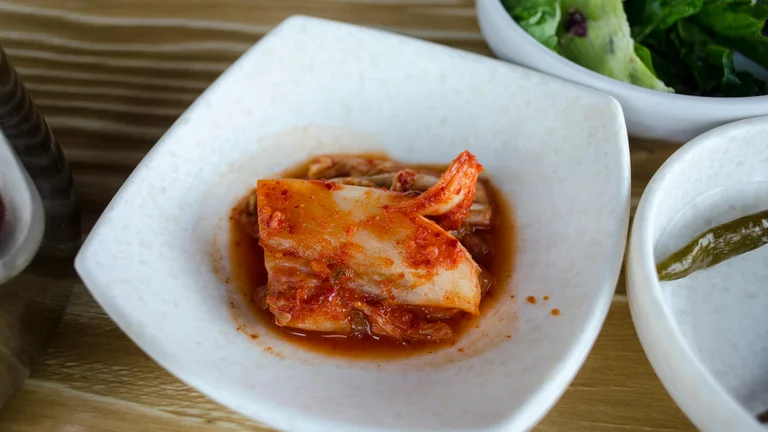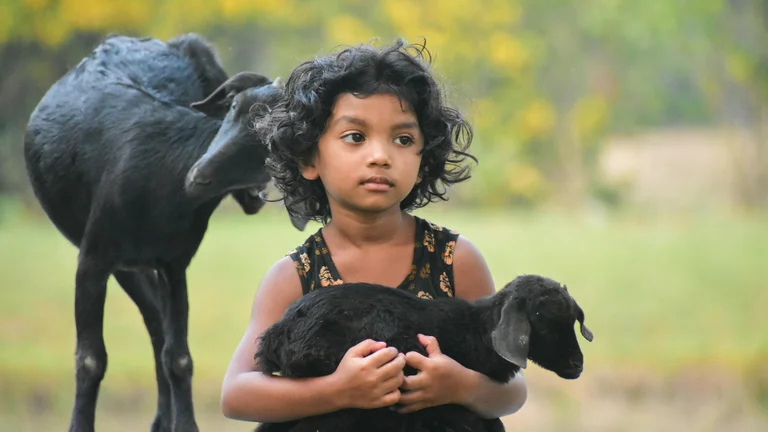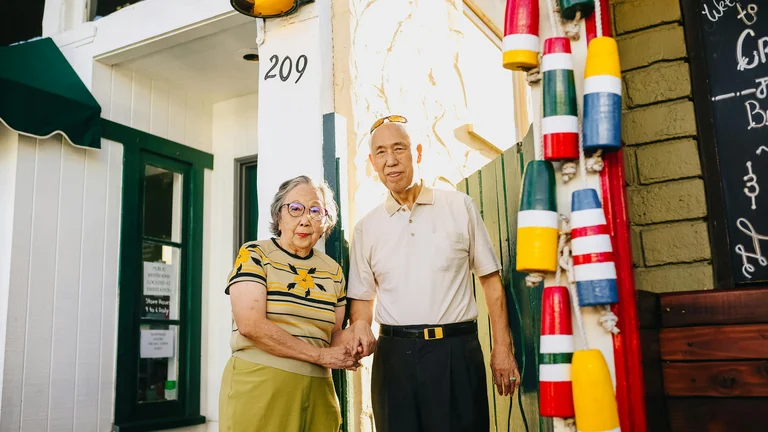Exploring the Charm of Cooking Scenes in Korean Dramas

Cooking scenes in Korean dramas hold a distinct appeal that resonates deeply with audiences around the world. These sequences go far beyond simply showing characters preparing meals: they reveal personalities, deepen relationships, and create an atmosphere rich in warmth and emotional connection. In Korean dramas, food and cooking are often symbolic acts—demonstrations of care, subtle expressions of love, and vehicles for character development. Each chop of vegetables, simmer of broth, or shared bite can tell a story as profoundly as any spoken word or dramatic event.
The adorable nature of these cooking moments stems from the blend of tender human interaction and the intricate rituals of Korean culinary culture. Characters often cook for others in unassuming but meaningful ways, like preparing simple but lovingly made dishes—such as kimchi jjigae, tteokbokki, or egg bread (gyeran-ppang)—which are familiar and nostalgic to Korean viewers and appealingly quaint to international audiences. These humble, comfort foods become vessels for conveying innocence, care, and intimacy.
One key factor is how cooking scenes generally portray the vulnerability and sincerity of characters. In many dramas, characters who struggle with communication or harbor guarded emotions find release and connection through cooking. Watching someone meticulously wash ingredients or nervously flip pancakes reveals their inner world without dialogue. This cinematic technique invites viewers into an intimate space, transforming a mundane task into a heartwarming spectacle.
Iconic Korean Dramas Featuring Adorable Cooking Scenes
Various Korean dramas have captured the essence of adorable cooking scenes, creating some of the most memorable moments in their storylines. These scenes often become fan favorites and are integral to iconic romantic or comedic sequences.
For example, in Crash Landing on You, cooking scenes between Yoon Se-ri and Ri Jeong-hyeok demonstrate cultural and emotional bridging. The simple act of cooking kimchi stew and sharing homemade meals not only showcases traditional Korean cuisine but also hints at the growing affection between the characters amid political tension.
Another prime example is What's Wrong With Secretary Kim? where Lee Young-joon and Kim Mi-so engage in cooking sessions filled with playful banter and awkward charm. Their attempts at cooking new dishes together bring out lighthearted and adorable moments that reflect their evolving romance, showing how shared culinary experiences deepen connection in subtle ways.
In Weightlifting Fairy Kim Bok-joo, the protagonist’s relationship with food represents more than nutrition; it symbolizes her journey to self-acceptance and love. Scenes where she bakes cakes or enjoys late-night snacks with friends underline the sense of camaraderie and youthful innocence present throughout the series.
Why Cooking Scenes Are So Effective in Korean Drama Narratives
From a narrative perspective, cooking scenes serve several critical functions. First, they allow a break from the main plot’s tension or conflict, introducing moments of levity and warmth. This contrast heightens emotional engagement by providing balance and showcasing different facets of characters.
Second, these scenes are potent tools for non-verbal storytelling. Emotions like nervousness, care, affection, or frustration can be communicated through characters’ body language and interaction with food. For instance, the way a character carefully seasons soup or hesitantly offers a bite speaks volumes about their feelings and intentions.
Third, cooking scenes often incorporate cultural elements, helping international viewers to appreciate the nuances of Korean food customs, meal etiquette, and culinary traditions. This cultural immersion enriches the viewing experience beyond the narrative, sparking interest in Korean cuisine and lifestyle.
Additionally, cooking sequences frequently act as metaphors. Preparing a dish from scratch can symbolize characters’ efforts to build relationships or start anew. The imperfect yet heartfelt attempts at recipes highlight themes such as growth, forgiveness, and persistence.
Typical Elements in Adorable Cooking Scenes
Several characteristic components make cooking scenes in Korean dramas charming and effective. These include:
- Setting and Atmosphere: Kitchens shown are often cozy, warm, and softly lit, reinforcing a sense of comfort and homeliness. They may be small and cluttered, emphasizing intimacy, or feature traditional Korean cooking utensils alongside modern appliances, blending past and present.
- Character Interaction: The interpersonal dynamics during cooking are crucial. Dramatic tension may arise from clumsy attempts, teasing remarks, or shy glances exchanged over simmering pots.
- Food Presentation: The visual appeal of dishes is carefully crafted. Bright colors, neat plating, steam rising from bowls—these elements evoke sensory delight and realism.
- Background Music and Sound Effects: Soft, playful music along with natural kitchen sounds (chopping, sizzling) enhance mood and immersion.
- Emotional Undercurrents: Cooking scenes are rarely just about food. They express care, reconciliation, nervousness, or affection, often paired with meaningful looks or hesitations.
Among these, food preparation often involves gradual progress—from initial uncertainty or awkwardness to more confident, tender moments. Watching characters improve their cooking skills mirrors their personal growth.
Step-by-Step Examples of Cooking Scenes in Korean Dramas
Understanding how these scenes function requires deconstructing typical sequences stepwise.
Step 1: Introduction to Ingredients
Characters are introduced to a selection of fresh, vibrant ingredients, often laid out on a counter. Close-up shots highlight the freshness, emphasizing an authentic culinary experience. For example, in Reply 1988, the mother character carefully selects kimchi and vegetables, showing care for family health.
Step 2: Interactive Preparation
The preparation process becomes a vehicle for interaction: exchanging tips, offering help, or laughing at mistakes. Characters might wash rice together or debate seasoning levels, adding layers to their dynamics. This step often features comedic mistakes or flustered reactions that increase the adorableness factor.
Step 3: Cooking and Waiting
Characters stand side by side near the stove, stirring or flipping, with soft exchanges or lingering glances. Tension, hope, or comfort can be communicated non-verbally here. The waiting period builds anticipation both for the food and the relationship development.
Step 4: Serving and Sharing
Food is plated or set on the table, sometimes with imperfect but sincere presentation. Offering a taste, feeding one another, or sharing a meal encapsulates a moment of intimacy or bonding. In My Love from the Star, feeding scenes underscore subtle affection between protagonists.
Step 5: Aftermath and Reflection
Post-meal reactions—compliments, shy smiles, or spontaneous laughter—serve as important emotional payoffs. The cooking scene ends on a note that cements connection and leaves a lasting impression on the viewer.
Cultural Significance of Food in Korean Dramas
Food in Korean dramas acts as a cultural ambassador, exposing audiences to Korea’s rich culinary heritage. Korean cuisine’s emphasis on communal eating, harmony of flavors, and seasonal ingredients is embedded in these scenes, reflecting society’s values.
The concept of jeong, often translated as deep affection or connection, is frequently demonstrated through food sharing. Characters’ willingness to cook for others reflects this value, reinforcing relational ties.
Traditional dishes such as bibimbap, bulgogi, and kimchi represent national pride and cultural identity, while street foods like hotteok or odeng showcase everyday life and youthful energy. These culinary choices provide context for the characters’ lifestyles and backgrounds.
Moreover, meal etiquette and table manners displayed in the cooking and eating sequences teach viewers about respect, hierarchy, and social harmony, which are important in Korean culture.
Comparison Table: Different Korean Dramas and Their Cooking Scene Styles
| Drama Title | Cooking Scene Style | Common Dishes Shown | Emotional Tone |
|---|---|---|---|
| Crash Landing on You | Intimate, warm, realistic | Kimchi jjigae, steamed eggs | Romantic, bridging cultures |
| Weightlifting Fairy Kim Bok-joo | Youthful, casual, lighthearted | Egg bread, instant noodles, cakes | Innocent, playful |
| What's Wrong With Secretary Kim? | Playful, comedic, charming | Korean BBQ, pancakes (jeon) | Teasing, affectionate |
| Reply 1988 | Nostalgic, family-oriented | Kimchi, home-cooked stews | Warm, sentimental |
| My Love From the Star | Mysterious, subtle, tender | Steamed rice, simple Korean dishes | Sincere, delicate |
How Adorable Cooking Scenes Enhance Viewer Engagement
The inclusive and relatable nature of cooking scenes draws viewers emotionally closer to the characters and storylines. Shared human experiences—such as preparing a meal or enjoying food together—transcend cultural and language barriers.
Fans often discuss favorite cooking scenes, replicate dishes at home, or engage in social media conversations about the characters’ culinary adventures. This interaction extends the drama’s impact beyond screen time, fostering a community of food and drama enthusiasts.
Moreover, cooking scenes create a multisensory appeal. Imagining aromas, textures, and tastes while watching intensifies immersion. This sensory engagement strengthens emotional investment in characters’ journeys and the underlying themes of love, growth, and healing.
Practical Guide: Recreating Adorable Cooking Scenes from Korean Dramas
For fans who want to experience the charm firsthand, recreating these cooking scenes can be fulfilling. Here are detailed steps to bring your favorite moments to life:
- Identify the Dish: Choose a simple, well-known Korean dish from a drama, such as tteokbokki, gyeran-ppang (egg bread), or bibimbap.
- Gather Authentic Ingredients: Visit an Asian grocery store or order online to secure items like gochujang (red chili paste), kimchi, rice cakes, sesame oil, and soy sauce for authenticity.
- Set the Atmosphere: Create a cozy kitchen space. Play light Korean instrumental music to mimic the mood of drama scenes.
- Follow a Recipe Step-by-Step: Use detailed Korean cooking tutorials, preferably videos, to understand techniques such as stir-frying or seasoning properly.
- Cook With a Partner or Friend: Recreate the interpersonal connection seen on-screen. Share tasks, laugh over mistakes, and offer encouragement.
- Present Thoughtfully: Plate the dish carefully. Add garnishes like sesame seeds or green onions. Take photos or share via social media to celebrate your accomplishment.
Integrating gestures from the drama—like shy offering of food or watching nervously—adds a performative layer to your experience, deepening appreciation.
List of Key Benefits of Watching Cooking Scenes in Korean Dramas
- Emotional Relatability: Offers viewers a sense of warmth and connection through familiar, everyday experiences.
- Cultural Education: Introduces Korean culinary practices and traditions effectively and engagingly.
- Character Insight: Reveals personality traits and relationship dynamics subtly through non-verbal cues.
- Stress Relief: Provides soothing, pleasant moments that contrast with drama tension and suspense.
- Inspirational Content: Motivates viewers to try cooking Korean dishes themselves, fostering new skills and hobbies.
Deeper Analysis: Symbolism and Subtext in Korean Drama Cooking Scenes
Beyond their surface charm, these cooking scenes often carry layered symbolism. Food preparation and sharing symbolize nurturing, trust, and emotional investment. When a character painstakingly cooks for another, it represents vulnerability and willingness to care deeply.
In some dramas, mismatched or burnt food mirrors imperfect relationships, suggesting that love, like cooking, requires patience and practice. Conversely, beautifully presented dishes symbolize harmony and successful reconciliation.
Food also functions as a bridge across social divides. For example, wealthy characters cooking simple meals reveal humility or longing for simpler times, while characters from different backgrounds bond over common tastes, breaking down barriers.
The kitchen itself is a potent metaphorical space. It's both a private sanctuary and a setting for open communication, where characters reveal hidden facets of themselves. Through this, Korean dramas use cooking sequences as narrative tools, creating emotional landscapes that audiences intuitively understand.
Case Study: Impact of Cooking Scenes on Audience Popularity and Drama Success
Several fan surveys and viewership analyses suggest that memorable cooking scenes correlate with increased audience engagement and show popularity. For instance, fan forums dedicated to dramas like Weightlifting Fairy Kim Bok-joo frequently highlight cooking moments as reasons for emotional attachment.
In global markets, cooking scenes act as cultural entry points, encouraging non-Korean viewers to explore Korean cuisine further, sometimes contributing to increased demand for Korean food products or kitchenware. Such scenes also enhance merchandise opportunities, like recipe books or themed kitchen accessories tied to popular dramas.
Industry insiders note that these sequences require detailed planning, with culinary experts often consulted to ensure authenticity. The dedication to realistic food depiction shows commitment to quality storytelling, which audiences reward with loyalty.
Frequently Used Recipes in Korean Drama Cooking Scenes
Certain recipes appear repeatedly in adorable cooking scenes due to their simplicity, cultural significance, and visual appeal. These recipes often act as narrative anchors.
| Dish | Description | Why It’s Popular in Dramas |
|---|---|---|
| Tteokbokki | Spicy stir-fried rice cakes with fish cakes and vegetables. | Colorful, easy to prepare, evokes street food culture. |
| Gyeran-ppang (Egg Bread) | Small sweet bread filled with whole eggs, often made street-side. | Simple, nostalgic, symbolizes youthful innocence. |
| Bibimbap | Mixed rice with assorted vegetables, beef, egg, and spicy chili paste. | Balanced flavors visual appeal, perfect for demonstration of layering effort. |
| Kimchi Jjigae | Hearty kimchi stew with pork, tofu, and vegetables. | Represents home-cooked comfort food and familial care. |
| Jeon (Korean Pancakes) | Pan-fried battered vegetables, seafood, or meat. | Common festive food, great for shared cooking scenes. |
Tips for Scriptwriters and Directors to Create Authentic Adorable Cooking Scenes
For creators aiming to capture genuine and endearing culinary moments in their dramas, the following recommendations can enhance authenticity and emotional impact:
- Incorporate Realistic Cooking Processes: Avoid shortcuts. Show actual ingredient preparation and use authentic cooking techniques, avoiding overly stylized or rushed scenes.
- Focus on Character Interaction: Use cooking as an opportunity to deepen relationships through meaningful exchanges, gestures, and subtle body language.
- Use Food Symbolism Thoughtfully: Connect dishes to narrative themes, employing food as metaphor to enhance storytelling layers.
- Consult Culinary Experts: Include chefs or food stylists to ensure accuracy in techniques and presentation.
- Pay Attention to Set Design: Design kitchen environments that reflect character personalities and cultural context.
- Balance Humor and Tenderness: Incorporate moments of clumsy mistakes and laughter alongside sincere care to maintain a natural tone.
By adhering to these principles, cooking scenes can transcend mere filler moments and become pivotal, memorable components of Korean dramas.
FAQ - Adorable Cooking Scenes in Korean Dramas
Why are cooking scenes so popular in Korean dramas?
Cooking scenes are popular because they portray warmth, intimacy, and character development without relying solely on dialogue. They offer cultural insights, evoke emotional connections, and provide relatable moments of care and vulnerability.
What makes cooking scenes in Korean dramas adorable?
Their adorableness stems from tender interactions, clumsy or shy attempts at cooking, warm atmospheres, and the cultural significance of sharing food, which reflects affection and emotional bonding between characters.
Which Korean dishes commonly appear in these cooking scenes?
Common dishes include kimchi jjigae, tteokbokki, egg bread (gyeran-ppang), bibimbap, and Korean pancakes (jeon). These dishes have cultural significance and are visually appealing, making them ideal choices.
How do cooking scenes contribute to character development?
Cooking scenes reveal characters’ personalities, emotions, and growth by showing their care, patience, or vulnerability in preparing meals, providing non-verbal storytelling that deepens audience understanding.
Can viewers learn about Korean culture through these scenes?
Yes, viewers gain exposure to Korean culinary traditions, meal etiquette, and social values, enriching their cultural knowledge while enjoying relatable storytelling.
Adorable cooking scenes in Korean dramas uniquely blend warmth, cultural tradition, and emotional depth, illustrating characters' relationships through shared culinary moments. These sequences enrich narratives by showcasing care and vulnerability, making them essential, beloved elements that deepen viewer engagement and cultural appreciation.
Adorable cooking scenes in Korean dramas artfully combine culinary tradition with emotional storytelling, creating moments that are at once culturally rich and universally relatable. These sequences deepen character relationships, offer peaceful respites within complex narratives, and invite audiences into intimate spaces where food becomes a symbol of love and connection. Their enduring popularity reflects the power of simple acts such as cooking and sharing meals to convey profound human experiences.






